Asparagine Synthetase Marks a Distinct Dependency Threshold for Cardiomyocyte Dedifferentiation
- PMID: 38586957
- PMCID: PMC11147732
- DOI: 10.1161/CIRCULATIONAHA.123.063965
Asparagine Synthetase Marks a Distinct Dependency Threshold for Cardiomyocyte Dedifferentiation
Abstract
Background: Adult mammalian cardiomyocytes have limited proliferative capacity, but in specifically induced contexts they traverse through cell-cycle reentry, offering the potential for heart regeneration. Endogenous cardiomyocyte proliferation is preceded by cardiomyocyte dedifferentiation (CMDD), wherein adult cardiomyocytes revert to a less matured state that is distinct from the classical myocardial fetal stress gene response associated with heart failure. However, very little is known about CMDD as a defined cardiomyocyte cell state in transition.
Methods: Here, we leveraged 2 models of in vitro cultured adult mouse cardiomyocytes and in vivo adeno-associated virus serotype 9 cardiomyocyte-targeted delivery of reprogramming factors (Oct4, Sox2, Klf4, and Myc) in adult mice to study CMDD. We profiled their transcriptomes using RNA sequencing, in combination with multiple published data sets, with the aim of identifying a common denominator for tracking CMDD.
Results: RNA sequencing and integrated analysis identified Asparagine Synthetase (Asns) as a unique molecular marker gene well correlated with CMDD, required for increased asparagine and also for distinct fluxes in other amino acids. Although Asns overexpression in Oct4, Sox2, Klf4, and Myc cardiomyocytes augmented hallmarks of CMDD, Asns deficiency led to defective regeneration in the neonatal mouse myocardial infarction model, increased cell death of cultured adult cardiomyocytes, and reduced cell cycle in Oct4, Sox2, Klf4, and Myc cardiomyocytes, at least in part through disrupting the mammalian target of rapamycin complex 1 pathway.
Conclusions: We discovered a novel gene Asns as both a molecular marker and an essential mediator, marking a distinct threshold that appears in common for at least 4 models of CMDD, and revealing an Asns/mammalian target of rapamycin complex 1 axis dependency for dedifferentiating cardiomyocytes. Further study will be needed to extrapolate and assess its relevance to other cell state transitions as well as in heart regeneration.
Keywords: cell dedifferentiation; cell self-renewal; myocytes, cardiac; regeneration.
Conflict of interest statement
Figures

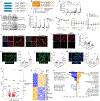
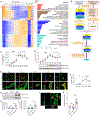

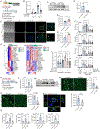
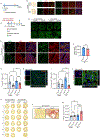
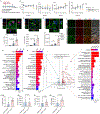
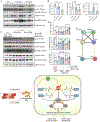
Comment in
-
The role of asparagine synthetase in cardiomyocyte dedifferentiation.Nat Cardiovasc Res. 2024 May;3(5):495. doi: 10.1038/s44161-024-00481-5. Nat Cardiovasc Res. 2024. PMID: 39195939 No abstract available.
References
-
- Ikeda S, Mizushima W, Sciarretta S, Abdellatif M, Zhai P, Mukai R, Fefelova N, Oka SI, Nakamura M, Del Re DP, Farrance I, Park JY, Tian B, Xie LH, Kumar M, Hsu CP, Sadayappan S, Shimokawa H, Lim DS, Sadoshima J. Hippo Deficiency Leads to Cardiac Dysfunction Accompanied by Cardiomyocyte Dedifferentiation during Pressure Overload. Circ Res. 2019;124:292–305. - PMC - PubMed
-
- D’Uva G, Aharonov A, Lauriola M, Kain D, Yahalom-Ronen Y, Carvalho S, Weisinger K, Bassat E, Rajchman D, Yifa O, Lysenko M, Konfino T, Hegesh J, Brenner O, Neeman M, Yarden Y, Leor J, Sarig R, Harvey RP, Tzahor E. ERBB2 triggers mammalian heart regeneration by promoting cardiomyocyte dedifferentiation and proliferation. Nat Cell Biol. 2015;17:627–638. - PubMed
-
- Aharonov A, Shakked A, Umansky KB, Savidor A, Genzelinakh A, Kain D, Lendengolts D, Revach OY, Morikawa Y, Dong J, Levin Y, Geiger B, Martin JF, Tzahor E. ERBB2 drives YAP activation and EMT-like processes during cardiac regeneration. Nat Cell Biol [Internet]. 2020;22:1346–1356. Available from: 10.1038/s41556-020-00588-4 - DOI - PubMed
MeSH terms
Substances
Grants and funding
LinkOut - more resources
Full Text Sources
Molecular Biology Databases

